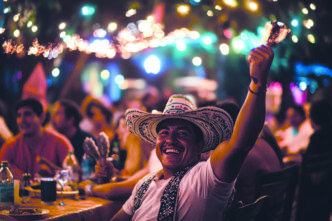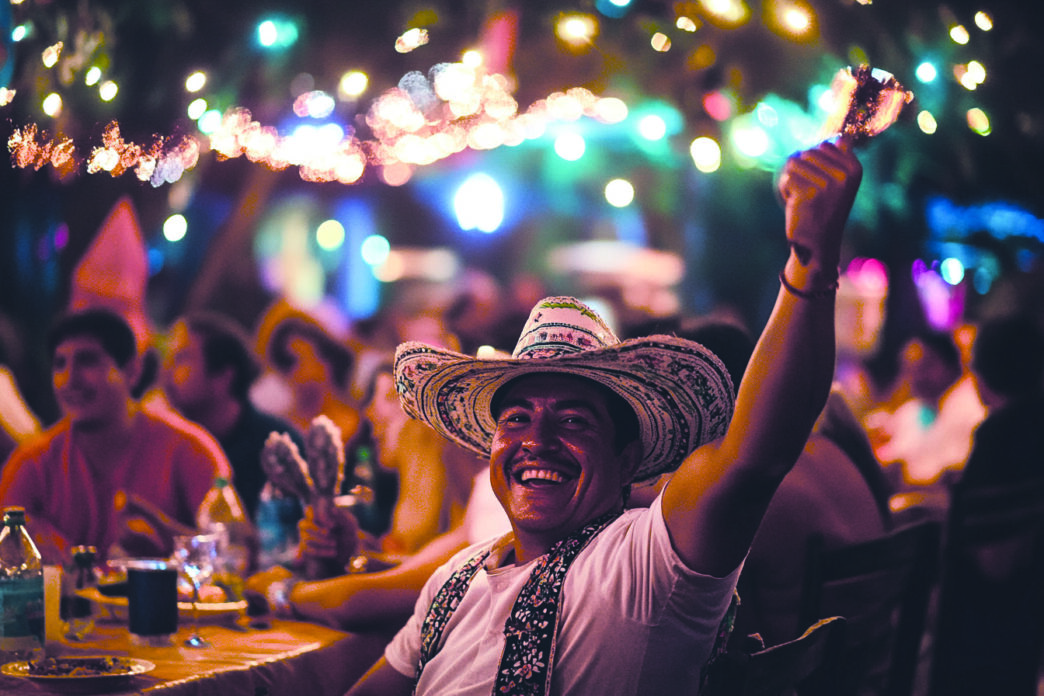No, it is not a person. It is a party drawn out
BY ALMA CHASE
December 12 is one of the main holidays in Mexico, probably more important and more traditional for Mexicans than any other. There are huge pilgrimages to the Basilica de Guadalupe, commonly known as La Villa de Guadalupe, or simply “La Villa”. This place is undoubtedly the greatest religious center of Mexico. The shrine is visited by millions of pilgrims every year, especially on December 12, the day of the Virgin of Guadalupe.
The Basilica of Santa Maria de Guadalupe is a Catholic church sanctuary dedicated to the Virgin Mary under her title of Guadalupe, located at the foot of Tepeyac Hill in Mexico City.
This is the most visited site in the world, second only to St. Peter’s Basilica in Rome. Annually, about 20,000,000 pilgrims visit the shrine, of which about 9,000,000 are in the days leading up to December 12.
This place is not only a big church but a whole complex that includes: three chapels, one cemetery, a museum, a research center, a convent with a temple included, and two main temples: The old Basilica and the new Basilica. Many gardens, and little Mexican traditional markets in which traditional food is served.
This is also when the Mexican Parties Marathon starts. It is called that, as it was a person’s name because it starts with the Guadalupe celebrities and ends up on Dia de Reyes (Epiphany) on Jan 6.
It begins with the Guadalupe celebration, then the posadas that go from the 16 to the 24 of December, then the New Year’s Eve Celebration, and it ends with the Dia de Reyes party. So, there are 26 days of parties in a row. You might be able to attend all of them if you have enough friends that invite you or not, but that is the goal.
December 12 is also Banker’s Day in Mexico, so the banks are closed, and they have a day off so … they party.
Many Mexicans then hold the Guadalupe name as their name, male and female, so they guess what? They party. The practicing Catholics, celebrate too.
Then, the Posadas, which had a very religious symbolism in the past but became to be also a great excuse to party. Almost all companies, enterprises, hotels, restaurants, etc. throw a huge party for their employees any day between the 16th and the 23rd. These parties include the famous Mexican Punch (A fruit infusion that can take alcohol or not and is served hot) dinner, drinks, and very often raffles. The companies provide all kinds of presents, like tablets, kitchen and home appliances, pots, pans, glassware, towels, bed sheets, you name it!
Many of these companies ask their suppliers to collaborate by donating gifts. So, after these parties, everybody goes home with a present. It has become a nice tradition that reinforces the relationship between companies and employees.
Also, in the neighborhoods Posadas are organized, all the neighbors gather together to share food, drinks, and candies and to brake the so famous Mexican Piñata that is mandatory for those parties. The piñata is a traditional Mexican craft that is characterized by being a central element in the Christmas holidays. It is a seven-pointed star made out of a clay pot, decorated with cardboard to form the pics and silk paper to decorate and it is filled with fruits and sweets and is broken with a stick.
The piñata has a religious origin and is loaded with symbolism:
The seven peaks represent the seven deadly sins: sloth, gluttony, envy, anger, lust, greed and pride.
The stick with which the piñata is broken symbolizes the strength to fight evil.
The sweets and fruits that fall when broken represent the goods obtained.
The word piñata is of Mexican Spanish origin and means “jar or vessel.” The tradition dates back to ancient China, where they were used for New Year’s celebrations. Later, it arrived at Italy, Spain and finally Mexico by the Catholic missionaries
Schools have also their posadas for the students. So, between your coworkers, your neighbors, your family and your friends, you luckily will have a lot to posadas to attend. Tired already?
Then it comes Christmas dinner and Christmas Eve that are celebrated pretty much as the Americans do.
So, all you have to do now is survive and find a party going before New Year’s. Last but not least, it is time to celebrate Epiphany Day, which in Mexico is a big deal for kids, because as Papa Noel. The Three Magic Kings bring presents to the children that behave well just as Santa does. On that day, people share the “Rosca de Reyes” and hot chocolate.
Another thing that is also very representative of Mexico is the “Nacimiento” which you will see in several places, such as in churches, homes, shopping malls, and other venues, and occasionally on public lands and in public buildings.
This is a nativity scene created as a central part of Mexican Christmas celebrations and is associated with the birth of Jesus Christ. It is a display of a representation of all the elements that could have participated according to the bible and the Mexican culture. It may include the Holy Family, the three kings, and farm animals. With this representation, Mexicans find a great way of showing their creativity by creating it.
So, yes! In Mexico, December is the busiest month for parties of the year! Celebrate it! It is fun! ,



